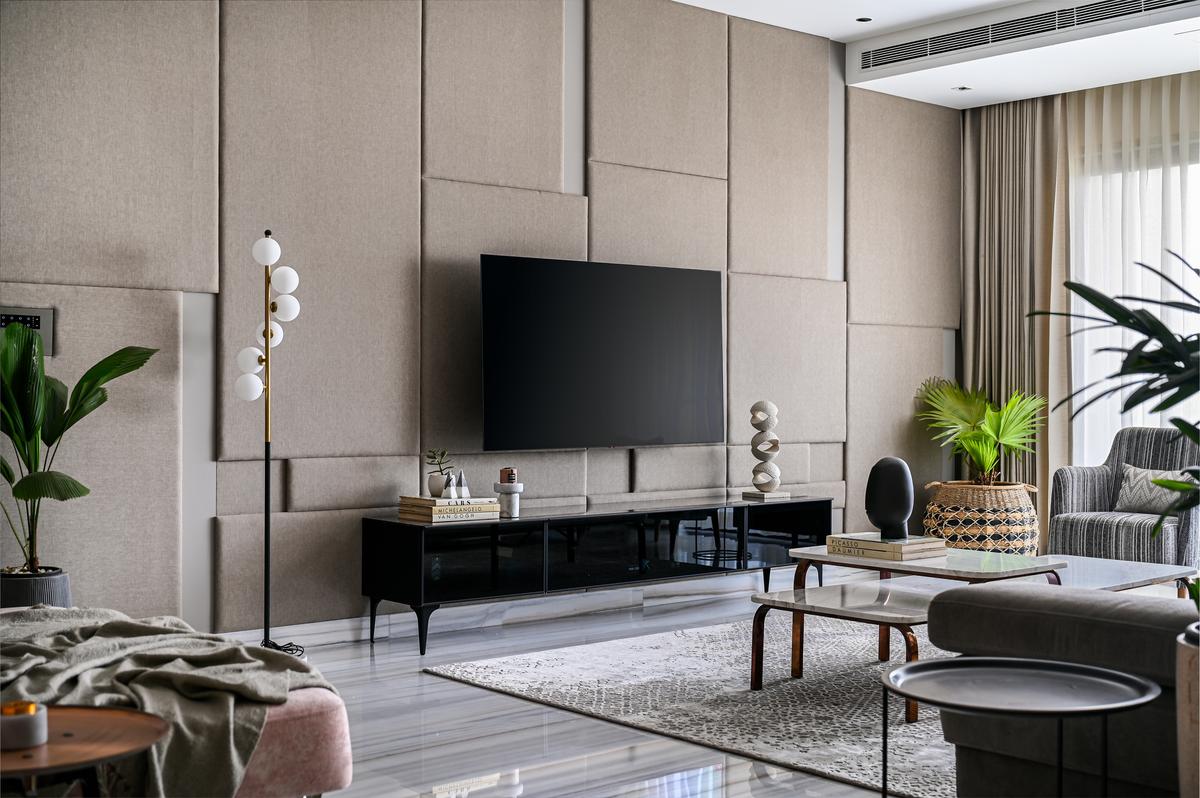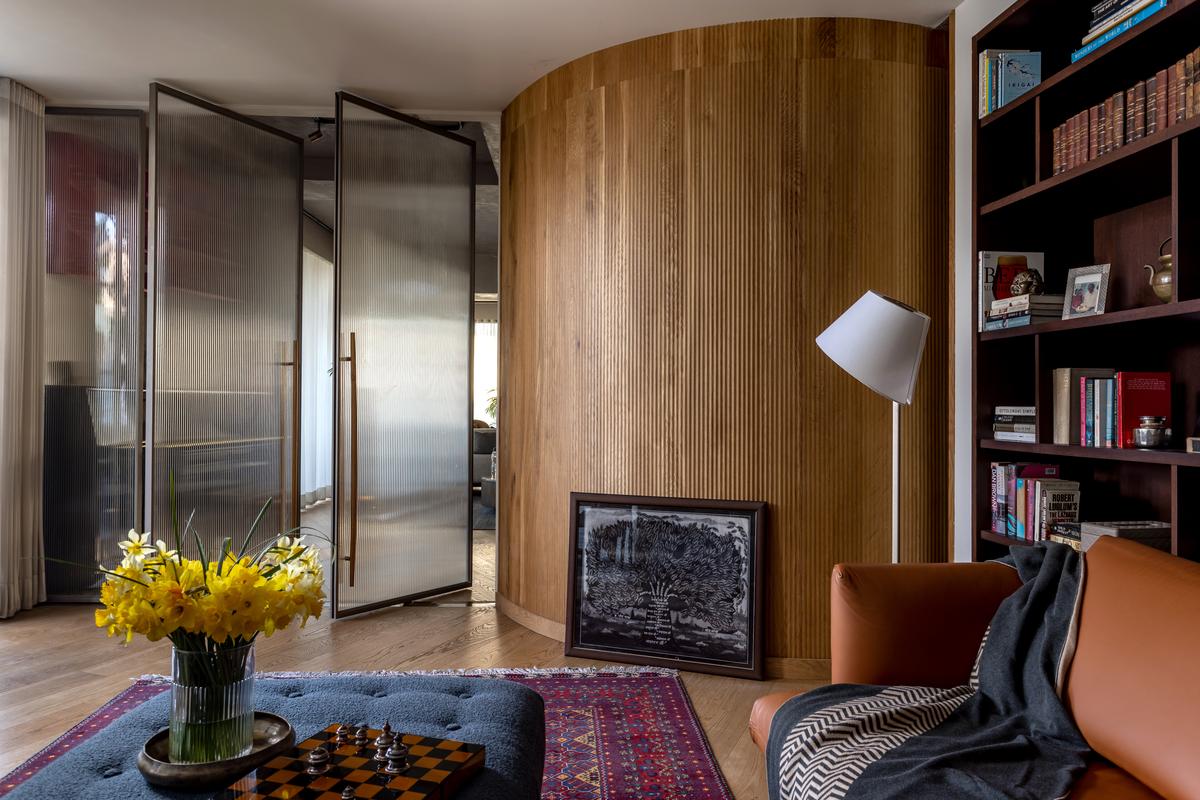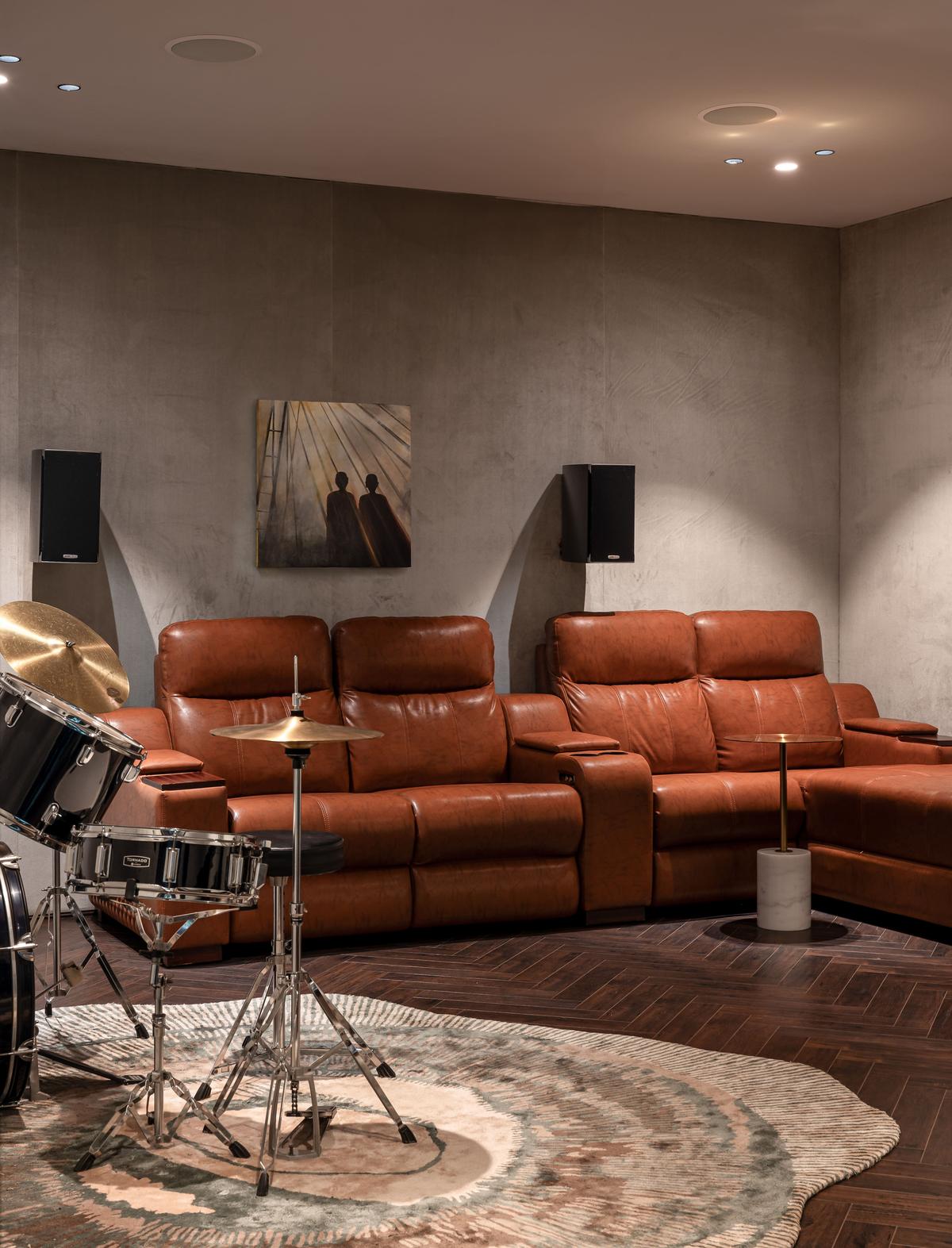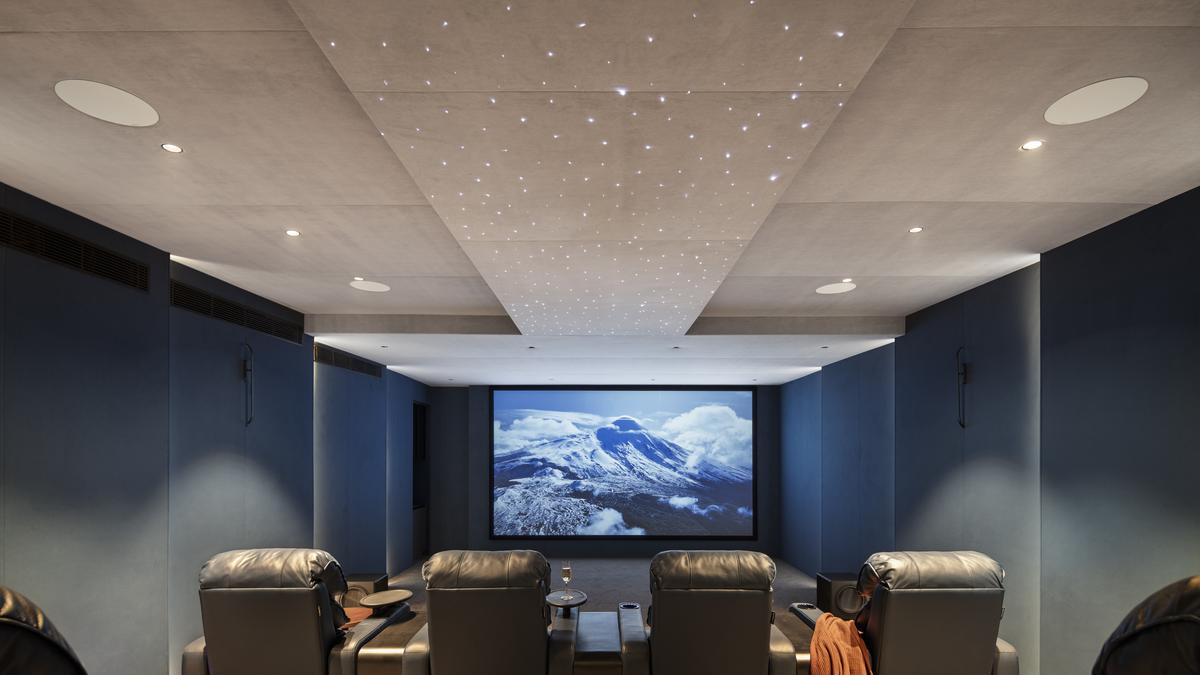In today’s increasingly hectic and fast-paced world, where cities are growing denser and noise has become a constant companion, silence feels like a true luxury. Concepts such as quiet holidays, silent retreats and even dedicated silent days observed in some countries are not uncommon any more.

Fabric acoustic panels with a hidden speaker by Source Architecture.
| Photo Credit:
Nayan Soni
Hence, it is no surprise that a lot of emphasis is placed on creating quiet homes that provide an oasis of peace, privacy, and comfort. “In the current times, soundproofing is integral to creating homes that support well-being. External noise from traffic, construction, or even neighbourhood activities can significantly affect sleep, focus, and emotional balance.

Kuntal Vyas Aggarwal.
“Thoughtful acoustic strategies help homeowners feel at peace in their private spaces, especially in high-density cities. Just as natural light and ventilation are essential to comfort, so is the quality of silence within a home,” says Kuntal Vyas Aggarwal, founder and design head, Resaiki Interiors and Architecture Design Studio.

Sneha Ostawal
Acoustic comfort directly affects how we rest, concentrate, and even interact with one another. “In today’s homes, acoustics should not be an afterthought as they are fundamental to how we feel in a space. Whether you are working, meditating, watching TV or simply sharing a meal, background noise can subconsciously affect comfort and clarity,” says Sneha Ostawal, founder and principal designer, Source Architecture. “Passive and active sound control strategies are essential, especially in Indian metros where external sound sources are unavoidable. Soundproofing also helps define emotional zoning. A quiet bedroom, a cocooned workspace or even a soft, echo-free living room; these things matter now more than ever before.” Room orientation, wall assemblies, and ceiling systems should be designed with acoustic performance in mind.

Quiet zones, such as bedrooms, study areas, and meditation nooks, must be buffered by transitional spaces or acoustic partitions.
| Photo Credit:
JeetinSharma
Furthermore, research indicates that constant noise can fuel stress, disrupt sleep, and deplete productivity; therefore, designers make an effort to incorporate calmness into the home through improved acoustic performance. “The rise of remote work and hybrid lifestyles means homes must function as offices, classrooms and studios, making acoustic comfort crucial for daily activities. Buyers expect acoustic separation in bedrooms, bathrooms and home theatres,” says Neha Bagait, studio principal, Vinciago by Livspace. “Developers also pitch soundproofing as a differentiator, which enhances value and appeals to potential buyers. New-age materials such as acoustic panels, insulated glass and eco-friendly composites help deliver a double win: quieter spaces and greater energy efficiency.”

Neha Bagait
Key architectural strategies
Active soundproofing first involves examining the sources of noise, whether external or internal, and then formulating a plan to address them in targeted ways. “Heavy materials like thick concrete walls and brick will limit external noise, while acoustic insulation, acoustic panels, and double-glazed windows reduce noise emanating from inside. Spatial layout is also important; we would usually want bedrooms near the least noisy part of a community,” explains Nimish Shashikant Ajmera, head of design and director, Ajmera Group. “Creating a buffer like hallways and passages, away from noisy areas or the source of the sound, is a good idea. Integration should happen at the design level to avoid costly add-ons down the line.”

Nimish Shashikant Ajmera
Material selection is also important; some natural products like timber, cork, or acoustic boards work nicely as a sound-absorbing material. Furnishings such as drapes, carpets, and rugs help soften indoor echoes too. Natural wood flooring, fluted wall panels, and layered curtains do more than look pretty; they reduce reverb and footfall sounds.

Soundproof design that allows life’s loud moments to unfold, while the rest of the home remains undisturbed.
| Photo Credit:
Nayan Soni
Airtight windows
Another popular strategy is to strengthen the building envelope with double-layer partitions and airtight windows and doors. “Plan interior layouts with clear quiet zones and buffer spaces, and reinforce acoustic separation between floors or between units in multi-family buildings,” adds Bagait. Double-glazed or laminated windows with deep reveals have become a go-to; they allow in light, but not chaos. They also help in reducing vibrations and maintaining thermal comfort. “Never leave the ceiling as a bare echo chamber. Even a simple wooden cladding or a recessed grid can shift the acoustic feel of a space,” shares Ostawal. Raised flooring with insulated layers or ceilings treated with PU foam reduces airborne as well as impact noise. Creating acoustic barriers and green walls is yet another strategy. “Landscaped walls, vertical gardens, or strategically placed dense plantations create a natural buffer that softens sound while improving air quality. Cavity walls with glass wool framing, perforated panelling, or fabric quilting ensure that noise from one room does not disrupt another,” adds Aggarwal.

Akshat Bhatt.
| Photo Credit:
Jeetin Sharma
Soundproofing is not merely about blocking sound; it is about curating acoustic comfort, a condition where desirable sounds are preserved and disruptive ones are absorbed or deflected. “In such a context, the home becomes a sonic envelope. Airborne noise [such as voices and traffic] requires mass and density: consider mass-loaded vinyl, acoustic drywall and sealed windows,” says Akshat Bhatt, principal architect, Architecture Discipline. “Structure-borne noise [such as footsteps and machinery] requires decoupling strategies, including resilient channels, floating floors and double-stud walls.” He also adds that it helps to deploy diffusive surfaces to scatter sound evenly, especially in media rooms or auditoriums.

Farah Agarwal.
It is key to seal gaps meticulously; doors, windows, unsealed electrical sockets, ductwork and pipe penetrations are often the weakest acoustic links. “The most important consideration is balance. The solution also has to suit the lifestyle of the family; a home that has an active social life needs different acoustic planning than one meant to be contemplative and private,” states Farah Agarwal, founder and principal designer, Chestnut Storeys. “Ultimately, it should feel effortless, where comfort and calm blend seamlessly into the space. Do not treat soundproofing as only a technical fix; it should feel natural and aligned with the home’s aesthetic.”
The Bengaluru-based freelance writer is passionate about all things design, travel, food, art and culture.





















